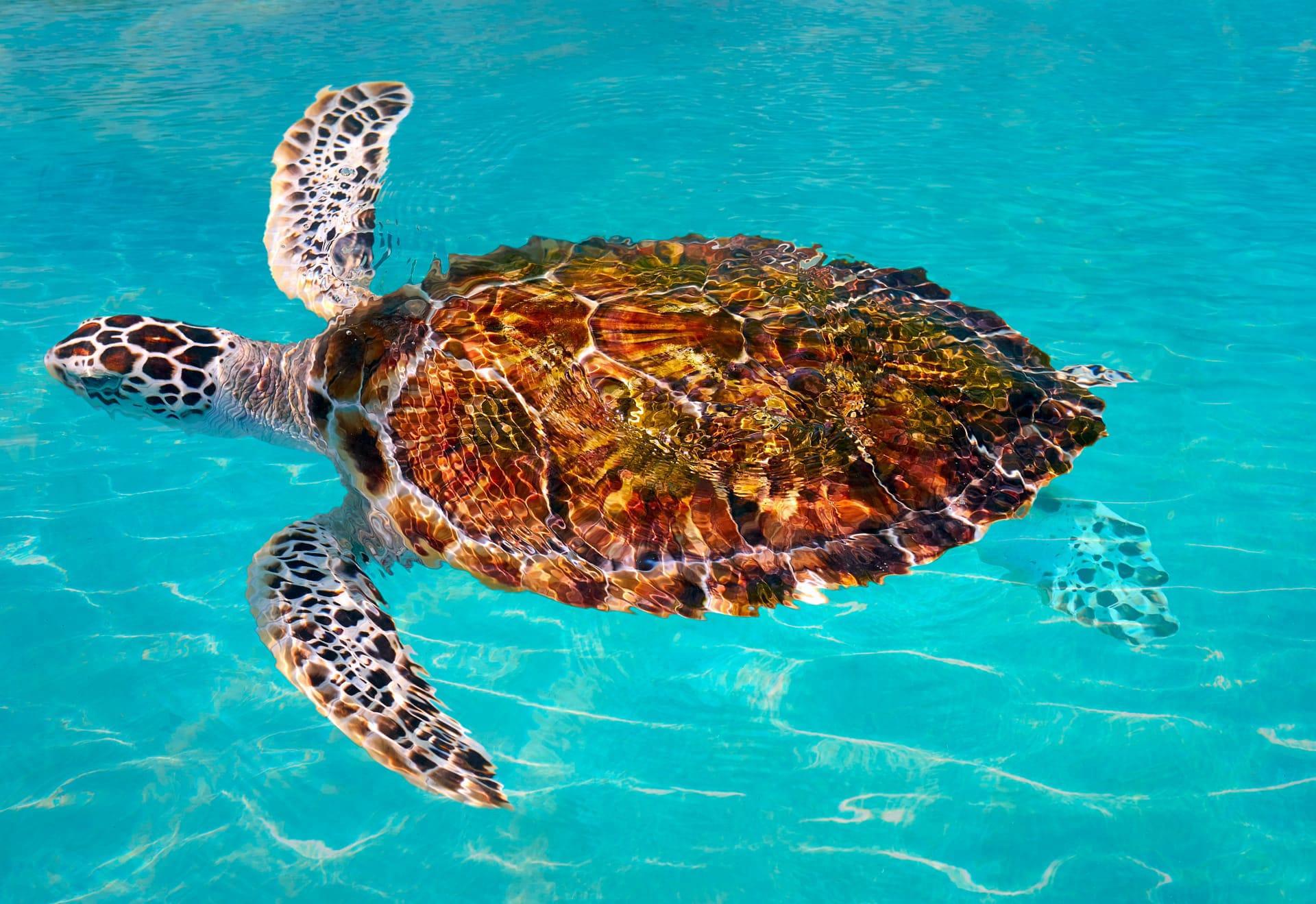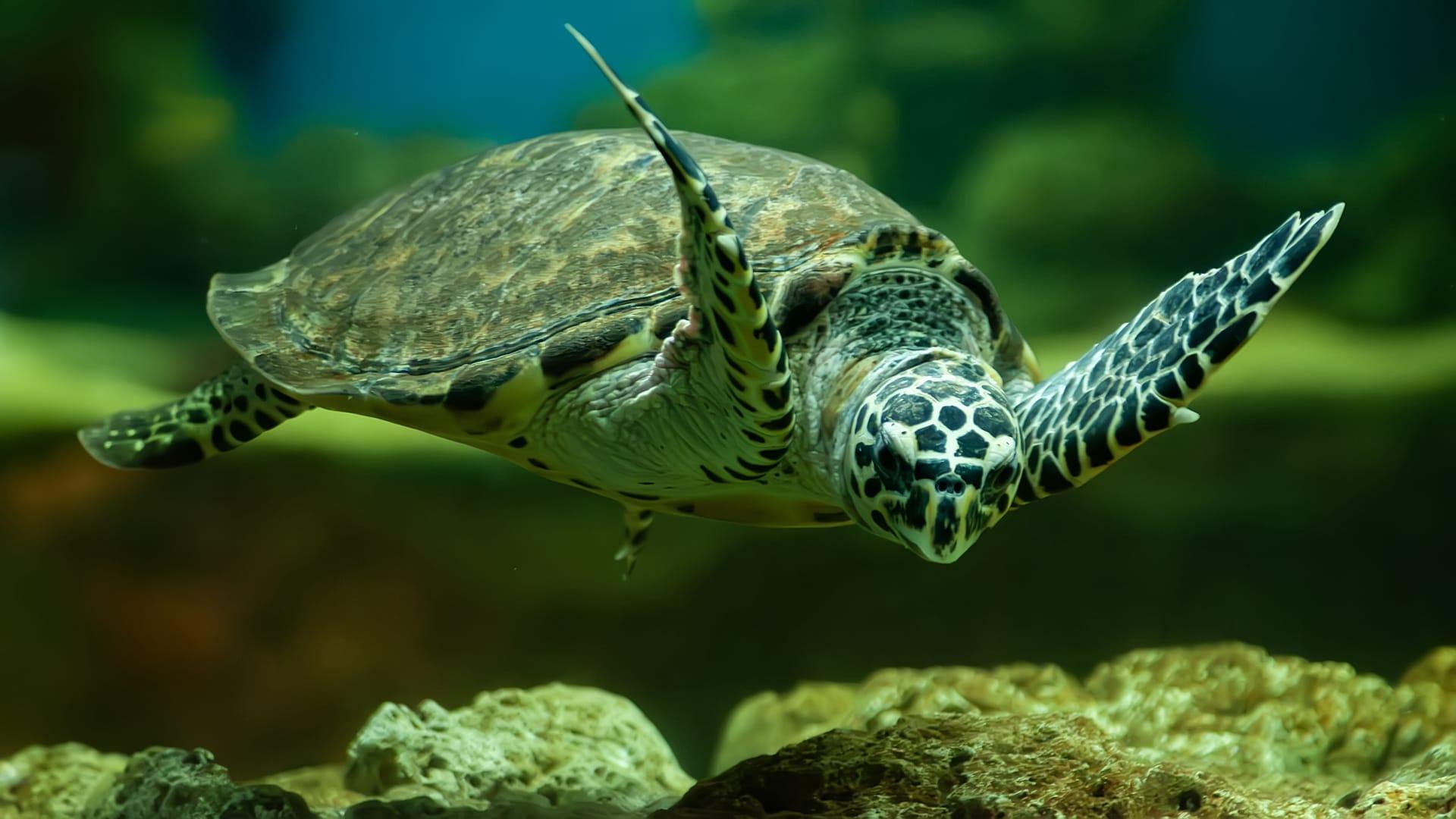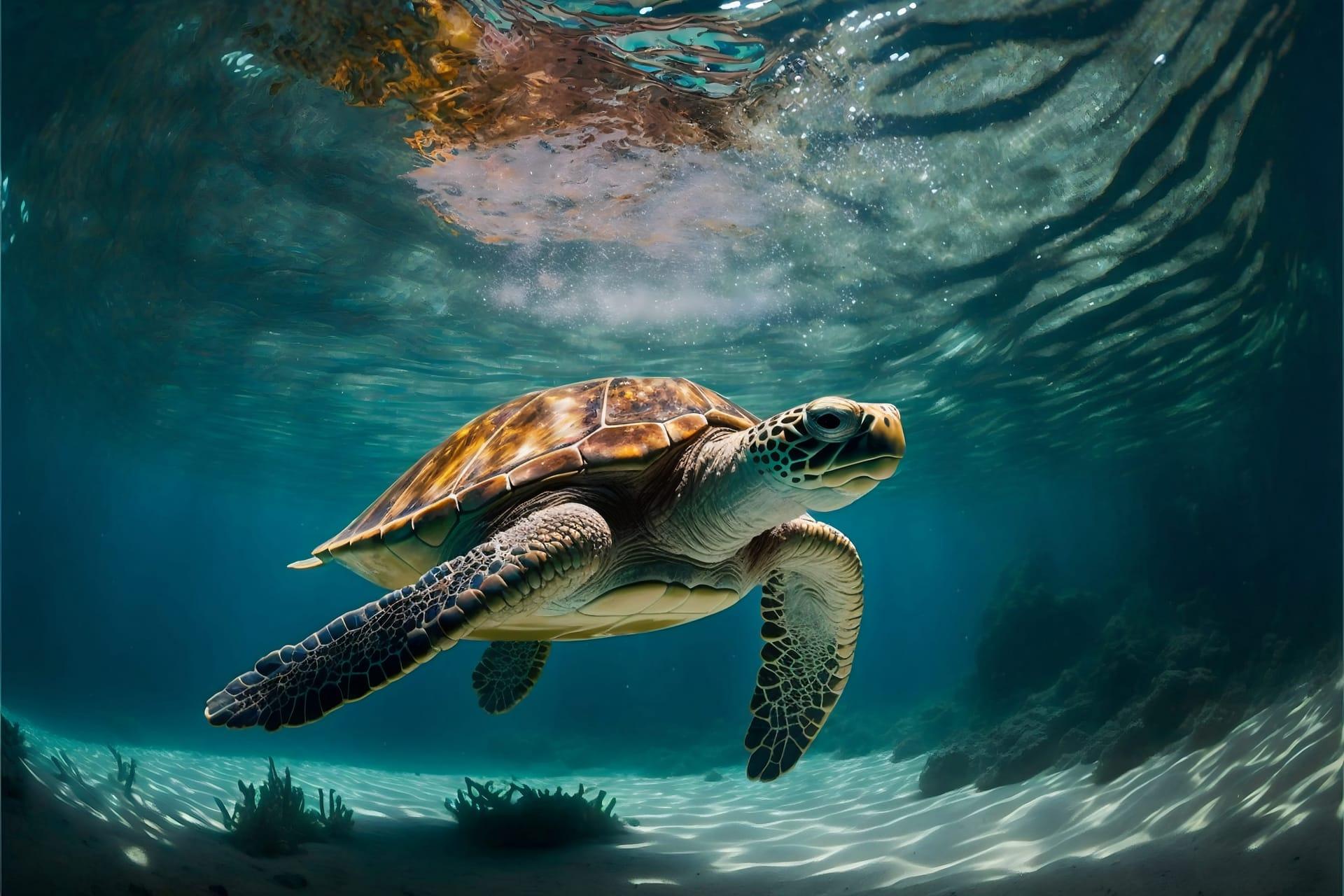Hawksbill Turtle Characteristics
- Home /
- Mini Encyclopedia /
- Animal /
- Hawksbill Turtle Characteristics
1
Hawksbill turtles, scientifically known as Eretmochelys imbricata, present a unique appearance among marine turtles. They're distinguished by their narrow, pointed beak and the distinctive pattern of overlapping scales on their shells, which resemble the sun's rays. Adult hawksbills typically measure about 30 to 35 inches in length and weigh between 80 to 115 kilograms. Their lifespan is quite remarkable, with these turtles living up to 50 years or more in the wild, though precise longevity can be hard to determine.
One of the most fascinating organs of the hawksbill turtle is its beak-like mouth. This sharply pointed and hooked beak is perfectly designed for their diet. It allows them to reach into small holes and crevices in coral reefs to extract their primary food source, sponges. This specialized diet has a crucial role in maintaining the health of coral reefs by controlling sponge populations, which, if left unchecked, can overgrow and suffocate the reefs.

2
Question: What are the major threats to hawksbill turtles?
Answer: The hawksbill turtle faces several threats, primarily from human activities. The most significant is the illegal trade of their shells, which are highly valued for making ornaments and jewelry. This has led to a drastic decline in their population, categorizing them as critically endangered. Additionally, they face threats from habitat loss due to coastal development, accidental capture in fishing gear, and climate change affecting their nesting sites. Conservation efforts focus on protecting nesting beaches, regulating fishing practices, and raising awareness about the consequences of the illegal shell trade.

3
Hawksbill turtles are known for their agility in the water. They have a streamlined body shape and flippers that enable them to maneuver through the intricate structures of coral reefs with ease. Their swimming speed averages around 0.5-0.8 meters per second, which is relatively fast compared to other sea turtles. This agility is crucial for avoiding predators and foraging in their complex coral reef habitats.
In terms of feeding habits, hawksbills are highly specialized. They primarily feed on sponges, which constitute 70-95% of their diet. Their narrow, pointed beak is an adaptation that allows them to extract sponges from tight spaces in coral reefs. They also consume other invertebrates like jellyfish and sea anemones. This diet not only supports the turtle's health but also plays a vital role in maintaining the ecological balance of coral reef systems by controlling sponge populations.

4
The hawksbill turtle predominantly inhabits tropical coral reefs. These environments provide an abundance of their preferred food, sponges, and offer hiding places from predators. Hawksbills are found in the Atlantic, Pacific, and Indian Oceans, with a preference for shallow waters. They occasionally venture into lagoons and mangrove swamps, particularly in their juvenile stage.
Reproduction in hawksbill turtles is a fascinating process. Females return to their natal beaches every two to three years to lay eggs. They can lay up to five clutches in a nesting season, with each clutch containing 60 to 200 eggs. After incubation for about 60 days, the hatchlings emerge and make their way to the sea. This period is critical as they face numerous predators and challenges to reach maturity.

5
Book: "The Hawksbill Turtle: Biology and Conservation" (United States, 2000) by James R. Spotila. This book offers an in-depth look into the life of the hawksbill turtle, covering its biology, behavior, and the challenges it faces. Spotila, a renowned biologist, provides insights into the turtle's ecological importance and the conservation efforts needed to protect it.
Book: "Sea Turtles: An Ecological Guide" (Australia, 2006) by David Gulko and Karen Eckert. While not exclusively about hawksbills, this book includes comprehensive information on all seven species of sea turtles, with a significant section dedicated to the hawksbill. It discusses their habitats, behaviors, and the threats they face, along with stunning underwater photography.